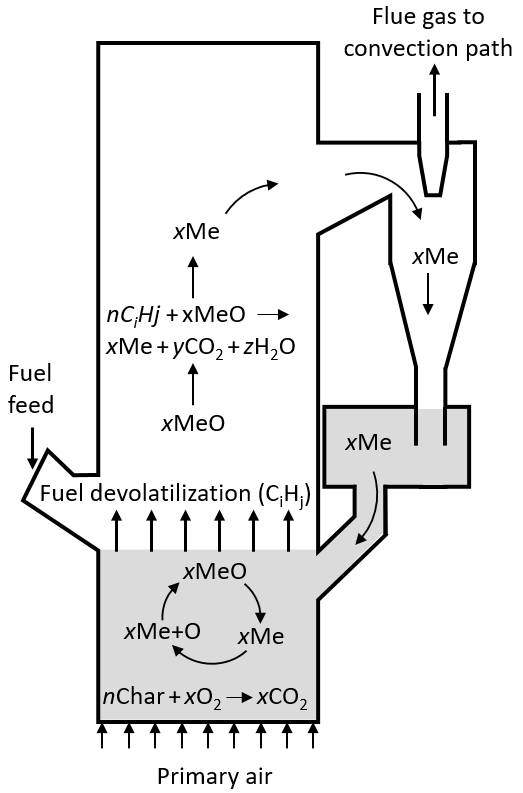
The Insitute of Energy Systems and Technology at TU Darmstadt performs oxygen carrier aided combustion (OCAC) tests with a fixed ratio of lignite and waste-derived fuels (RDF) in a 1 MWth CFB plant. Throughout the test campaign, starting with 100 % sand, the bed material is increased stepwise until close to 100 % of ilmenite is reached. After each change in bed material, the plant is continuously operated for at least 8 hours until a steady-state condition is reached. After reaching steady-state conditions, the air-to-fuel-ratio is varied to determine the possibility of reducing the excess air through better oxygen distribution in the reactor by the ilmenite.
The flue gas treatment will be carried out in an existing multipollutant flue gas cleaning system downstream of the furnace. The gas concentrations (particularly CO, SO2, NOx and HCl) are monitored after the furnace and after the flue gas cleaning system, so that counteractions can be performed if emissions exceed acceptable values.
A simplified schematic representation of the 1 MWth CFB burner can be seen on the right handside. The fuel feed enters the reactor on the left side. After converting the feedstock to char and volatiles, the components are oxidized in the different regions of the reactor. Within the upper region of the reactor, ilmenite reduces and releases its oxygen. This oxygen is used in exothermic oxidization reactions to convert volatiles to water and carbon dioxide. Following the gas and solids path, bed material, reduced ilmenite and carbon particles, that are carried away by the fluidization medium, are separated from the gas stream in a cyclone. The gas stream leaves the cyclone through the top while the solid particles fall down through the standpipe to the loop seal, where they re-enter the reactor. When the reduced ilmenite reaches the dense part of the reactor where excess oxygen is available, the reduction of ilmenite takes place and the cycle starts again.
